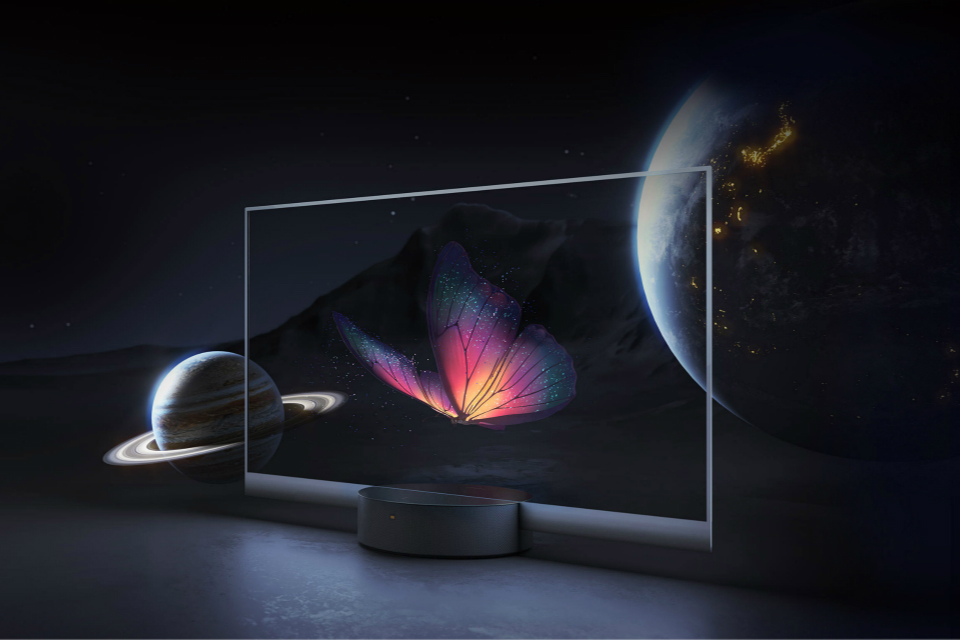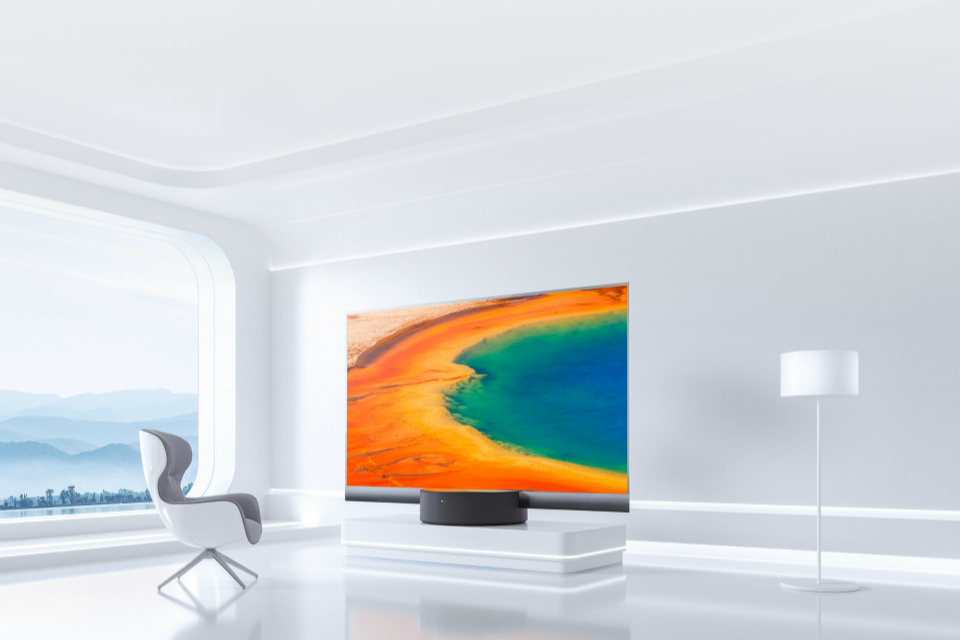On August 11, xiaomi unveiled the world’s first mass-produced transparent TV, the Mi Transparent TV, at a public speech by Lei Jun, the company’s 10th anniversary. The price is $7,200.
The best TVS offer great pictures, like seeing another world through a window.But — listen to me — what if your next TV is like a window and you can see behind it?That’s what Xiaomi’s new $7,200 transparent OLED TV promises.The xiaomi TV LUX OLED transparent version is a new product announced at the company’s 10th anniversary celebration and, according to media reports, shows solitary objects floating in space.During the live demonstration, staff laid out two potted flowers behind a transparent Xiaomi TV. Lei reached behind the screen and a colorful butterfly flew from the TV to his hand, which Lei described as “the future display in science fiction movies.”
As a matter of fact, transparent display or transparent OLED display has been around for a long time. However, xiaomi is the only manufacturer that dares to apply this technology to home TVS and do mass production.

Part of the reason the TV is transparent is that Xiaomi puts all its guts on its round base instead of behind the monitor.But the more magical part of making a transparent OLED screen is using transparent OLED technology (TOLED).
As mentioned above, the ubiquitous display of the company’s website breaks all specs, telling the screen to use transparent components throughout the stack, the screen, and no backlighting is required (each diode emits its own light, hence the acronym), and images can look like they float.Most other OLED screens use a reflective cathode layer, so you can’t see through it even if the back is removed.The result is a 55-inch transparent TV that, when turned off, “looks like a pure glass monitor.”Turn on the power, it has a 120Hz refresh rate, a 1ms response time, a 150,000:1 contrast ratio, and it has a 93% DCI-P3 color configuration.From a presentation point of view, it seems great, but I have some concerns that Xiaomi’s press release doesn’t really answer.For example, I can watch or broadcast anything on this TV, but what kind of content is best for it?Media assets show animals that cringe in the void.
Xiaomi talked about its AI host intelligent engine and customized Mediatek 9650 chip that intelligently optimizes the way images are presented, but it didn’t say how it could separate objects from the background as the image shows — if that’s what it can do.Maybe it just shows some very high resolution ones.PNG files, for other things, I want it to have a slightly more transparent quality, which is not what I want.Even if what you’re watching is optimized for the screen, chances are that the dormant parts of the screen won’t be as clear as you’d like.LG unveiled a similar logo in 2019, with a black frame.Xiaomi’s media images actually reflect the fact that the panel might be slightly darker, so this could be the real thing.

So, does Xiaomi have a future with this transparent OLED TV?Let’s analyze it.
The origin of transparent display
Transparent display this thing, the source of technology can be traced back to the era of black LIQUID crystal display.The characteristic of liquid crystal molecules is that they are electrically deflected and can be arranged to transmit light in certain state and not transmit light in certain state.With this feature, people add a backlight layer to the liquid crystal layer, a color filter, to make the LIQUID crystal display.
SONY discovered a blind spot around 2000.If, instead of a backlight layer, instead of a color filter, I just put the LIQUID crystal layer on top of the glass to control it, wouldn’t that be a transparent display?SONY first used the screen on some small electronics, then on the Xperia Pureness(X5), and Lenovo has a similar concept.This scheme, which can display black or grayscale information on a transparent screen, has no color and is not very practical, so it was quickly phased out.Then came OLED, a light-emitting device that replaces liquid crystal layers with no backlighting and no color filters.The likes of LG, Toshiba and SONY showed off the technology early on, but in recent years it has been used in the advertising industry.

Xiaomi’s strength in transparent OLED TVS
This Xiaomi Transparent TV features a 55-inch OLED, 5.77mm ultra-thin screen, 1.07 billion primary color screen, 120Hz refresh rate, 1ms instantaneous response, and AI Master engine.In terms of hardware, it is equipped with MTK 9650 customized TV chip, with quad-core A73 processor architecture, Mali-G52 graphics processor, independent neural network computing unit and intelligent scene recognition.
Its LG OLED is the latest, and its chips are high on the TV, giving it a good display if not a transparent screen.However, transparent screens have transparent screen problems.
Transparent, black on the screen can not be shown, only put the TV into the black environment, the TV can be normally watched, put into other environments, this TV without saying the effect, even the normal watch has problems.So Xiaomi’s transparent OLED TV is more of a concept than a practical one.Mi store inside, to improve the flow of people is still good, really buy home, you have to give it a black environment to normal use.

Does transparent TV have a future
From a technical point of view, do not effect transparent screen.You could make black and white 20 years ago, mobile phones were made more than 10 years ago, and color phones were made five years ago.
Now the problem with this is that it’s a big problem to make TV.A solid transparent screen requires a liquid crystal layer behind the OLED.Behind the OLED transparent screen, there is a black and white LCD transparent screen. When the OLED screen is displayed, the LCD layer is completely black.This requires the LCD transparent screen in the power when enough black, can filter out the uneven background light, achieve the effect of the black curtain.If it’s not black enough, the background won’t filter out and the display won’t work.
Also, the LCD screen has to be transparent enough when it’s not powered up.Otherwise, the light transmittance of OLED transparent screen is 40%.It’s already translucent. Add a translucent layer of liquid crystal.The opacity of a shut-off is the equivalent of a film on a car window, making it less attractive.From a technical point of view, these problems can be solved in the future, transparent TV will be better than today, will be closer to the level of non-transparent OLED TV.But, from a non-marketing point of view, why would anyone want to build a TV with a poor display, just for transparency’s sake?
So transparent TV is likely to be a flash in the pan and still a concept.

The TV will cost just 49,999 yuan ($7,200) in China and will be available for order from August 16.To be honest, I’d love to see it in action.In the West, we only have these broken OLeds that I can’t see through.




